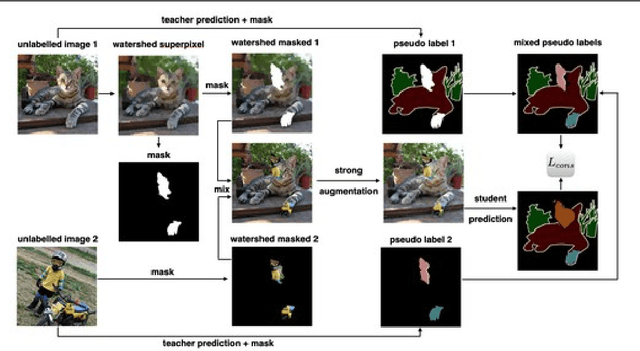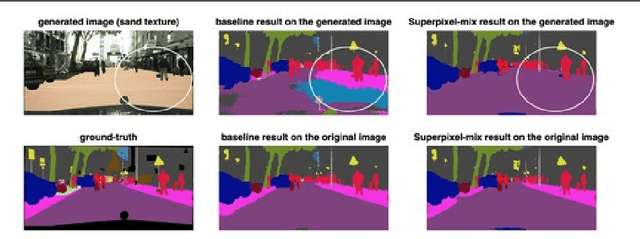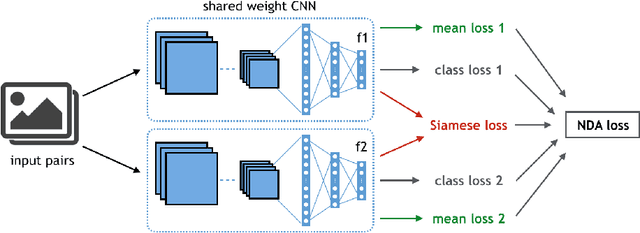Mai Lan Ha
Improving CLIP Robustness with Knowledge Distillation and Self-Training
Sep 19, 2023



Abstract:This paper examines the robustness of a multi-modal computer vision model, CLIP (Contrastive Language-Image Pretraining), in the context of unsupervised learning. The main objective is twofold: first, to evaluate the robustness of CLIP, and second, to explore strategies for augmenting its robustness. To achieve this, we introduce a novel approach named LP-CLIP. This technique involves the distillation of CLIP features through the incorporation of a linear probing layer positioned atop its encoding structure. This newly added layer is trained utilizing pseudo-labels produced by CLIP, coupled with a self-training strategy. The LP-CLIP technique offers a promising approach to enhance the robustness of CLIP without the need for annotations. By leveraging a simple linear probing layer, we aim to improve the model's ability to withstand various uncertainties and challenges commonly encountered in real-world scenarios. Importantly, our approach does not rely on annotated data, which makes it particularly valuable in situations where labeled data might be scarce or costly to obtain. Our proposed approach increases the robustness of CLIP with SOTA results compared to supervised technique on various datasets.
Reliable Semantic Segmentation with Superpixel-Mix
Aug 02, 2021



Abstract:Along with predictive performance and runtime speed, reliability is a key requirement for real-world semantic segmentation. Reliability encompasses robustness, predictive uncertainty and reduced bias. To improve reliability, we introduce Superpixel-mix, a new superpixel-based data augmentation method with teacher-student consistency training. Unlike other mixing-based augmentation techniques, mixing superpixels between images is aware of object boundaries, while yielding consistent gains in segmentation accuracy. Our proposed technique achieves state-of-the-art results in semi-supervised semantic segmentation on the Cityscapes dataset. Moreover, Superpixel-mix improves the reliability of semantic segmentation by reducing network uncertainty and bias, as confirmed by competitive results under strong distributions shift (adverse weather, image corruptions) and when facing out-of-distribution data.
Learning a Discriminant Latent Space with Neural Discriminant Analysis
Jul 13, 2021



Abstract:Discriminative features play an important role in image and object classification and also in other fields of research such as semi-supervised learning, fine-grained classification, out of distribution detection. Inspired by Linear Discriminant Analysis (LDA), we propose an optimization called Neural Discriminant Analysis (NDA) for Deep Convolutional Neural Networks (DCNNs). NDA transforms deep features to become more discriminative and, therefore, improves the performances in various tasks. Our proposed optimization has two primary goals for inter- and intra-class variances. The first one is to minimize variances within each individual class. The second goal is to maximize pairwise distances between features coming from different classes. We evaluate our NDA optimization in different research fields: general supervised classification, fine-grained classification, semi-supervised learning, and out of distribution detection. We achieve performance improvements in all the fields compared to baseline methods that do not use NDA. Besides, using NDA, we also surpass the state of the art on the four tasks on various testing datasets.
Deep Ranking with Adaptive Margin Triplet Loss
Jul 13, 2021



Abstract:We propose a simple modification from a fixed margin triplet loss to an adaptive margin triplet loss. While the original triplet loss is used widely in classification problems such as face recognition, face re-identification and fine-grained similarity, our proposed loss is well suited for rating datasets in which the ratings are continuous values. In contrast to original triplet loss where we have to sample data carefully, in out method, we can generate triplets using the whole dataset, and the optimization can still converge without frequently running into a model collapsing issue. The adaptive margins only need to be computed once before the training, which is much less expensive than generating triplets after every epoch as in the fixed margin case. Besides substantially improved training stability (the proposed model never collapsed in our experiments compared to a couple of times that the training collapsed on existing triplet loss), we achieved slightly better performance than the original triplet loss on various rating datasets and network architectures.
 Add to Chrome
Add to Chrome Add to Firefox
Add to Firefox Add to Edge
Add to Edge